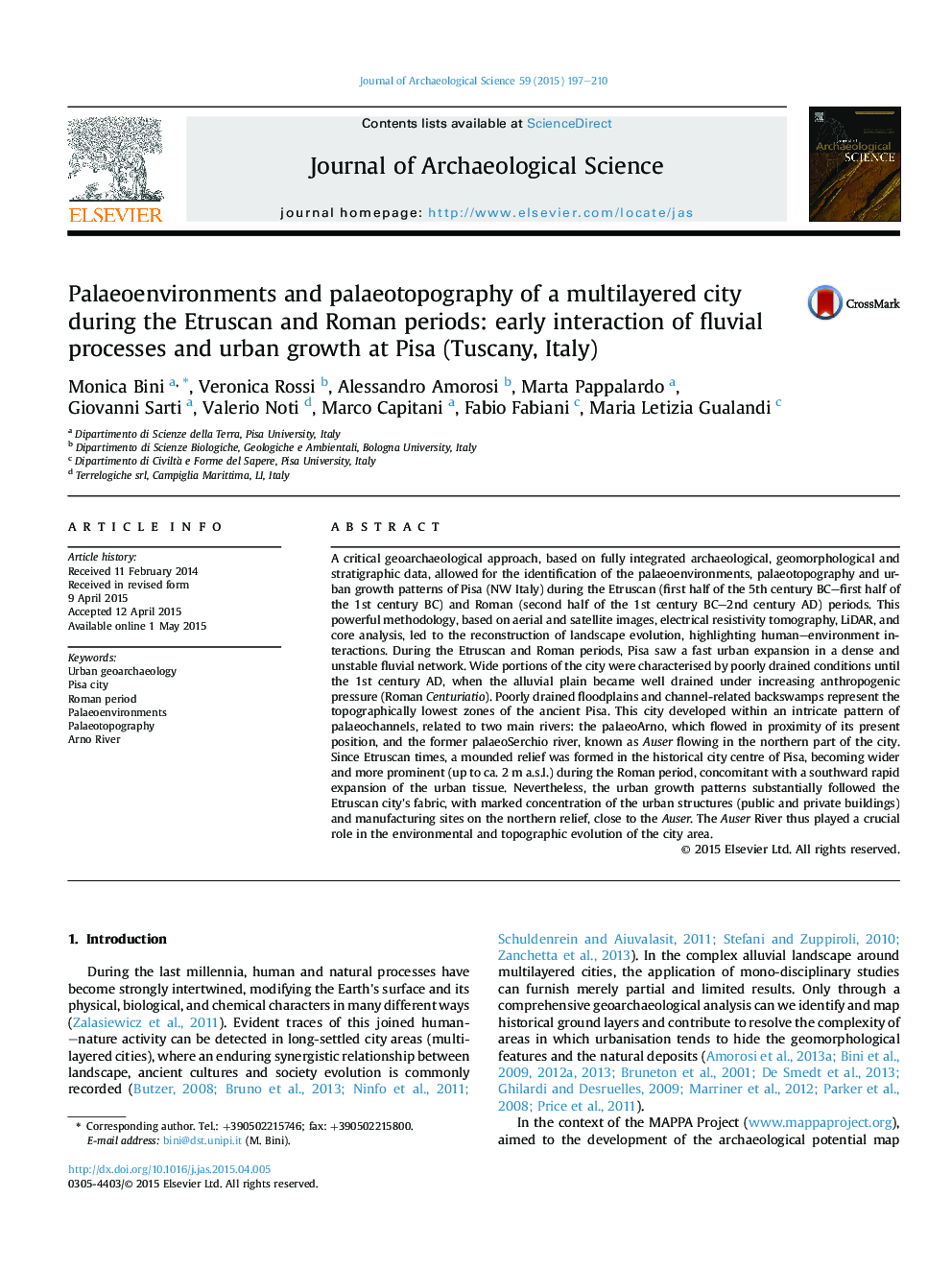| کد مقاله | کد نشریه | سال انتشار | مقاله انگلیسی | نسخه تمام متن |
|---|---|---|---|---|
| 1035367 | 1483901 | 2015 | 14 صفحه PDF | دانلود رایگان |
عنوان انگلیسی مقاله ISI
Palaeoenvironments and palaeotopography of a multilayered city during the Etruscan and Roman periods: early interaction of fluvial processes and urban growth at Pisa (Tuscany, Italy)
ترجمه فارسی عنوان
محیط پالایو و پائئوتاپوگرافی یک شهر چند لایه در دوره های اتریش و رومی: تعامل زودهنگام فرایندهای رگبار و رشد شهری در پیزا (توسکانی، ایتالیا)
دانلود مقاله + سفارش ترجمه
دانلود مقاله ISI انگلیسی
رایگان برای ایرانیان
موضوعات مرتبط
مهندسی و علوم پایه
مهندسی مواد
دانش مواد (عمومی)
چکیده انگلیسی
A critical geoarchaeological approach, based on fully integrated archaeological, geomorphological and stratigraphic data, allowed for the identification of the palaeoenvironments, palaeotopography and urban growth patterns of Pisa (NW Italy) during the Etruscan (first half of the 5th century BC-first half of the 1st century BC) and Roman (second half of the 1st century BC-2nd century AD) periods. This powerful methodology, based on aerial and satellite images, electrical resistivity tomography, LiDAR, and core analysis, led to the reconstruction of landscape evolution, highlighting human-environment interactions. During the Etruscan and Roman periods, Pisa saw a fast urban expansion in a dense and unstable fluvial network. Wide portions of the city were characterised by poorly drained conditions until the 1st century AD, when the alluvial plain became well drained under increasing anthropogenic pressure (Roman Centuriatio). Poorly drained floodplains and channel-related backswamps represent the topographically lowest zones of the ancient Pisa. This city developed within an intricate pattern of palaeochannels, related to two main rivers: the palaeoArno, which flowed in proximity of its present position, and the former palaeoSerchio river, known as Auser flowing in the northern part of the city. Since Etruscan times, a mounded relief was formed in the historical city centre of Pisa, becoming wider and more prominent (up to ca. 2 m a.s.l.) during the Roman period, concomitant with a southward rapid expansion of the urban tissue. Nevertheless, the urban growth patterns substantially followed the Etruscan city's fabric, with marked concentration of the urban structures (public and private buildings) and manufacturing sites on the northern relief, close to the Auser. The Auser River thus played a crucial role in the environmental and topographic evolution of the city area.
ناشر
Database: Elsevier - ScienceDirect (ساینس دایرکت)
Journal: Journal of Archaeological Science - Volume 59, July 2015, Pages 197-210
Journal: Journal of Archaeological Science - Volume 59, July 2015, Pages 197-210
نویسندگان
Monica Bini, Veronica Rossi, Alessandro Amorosi, Marta Pappalardo, Giovanni Sarti, Valerio Noti, Marco Capitani, Fabio Fabiani, Maria Letizia Gualandi,
